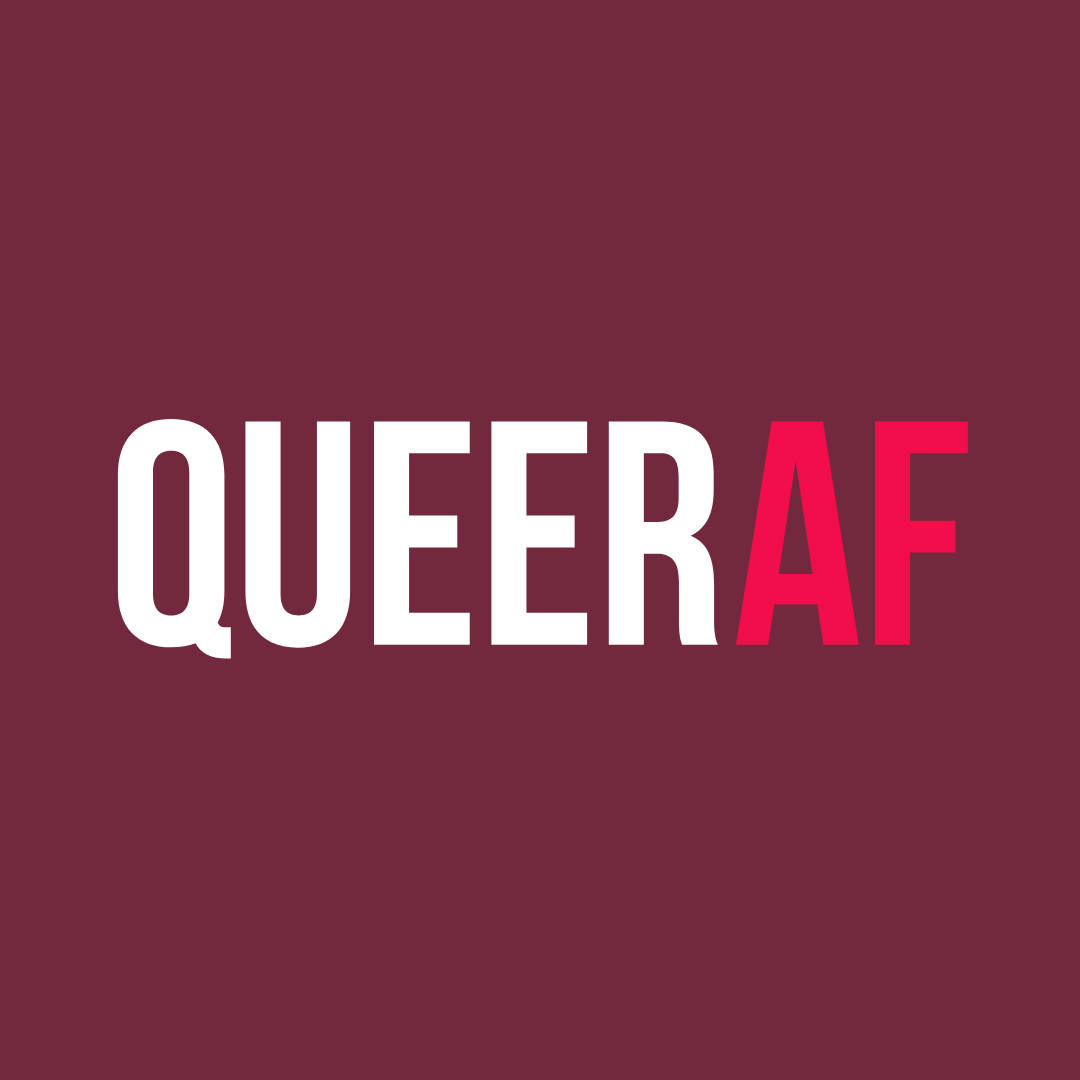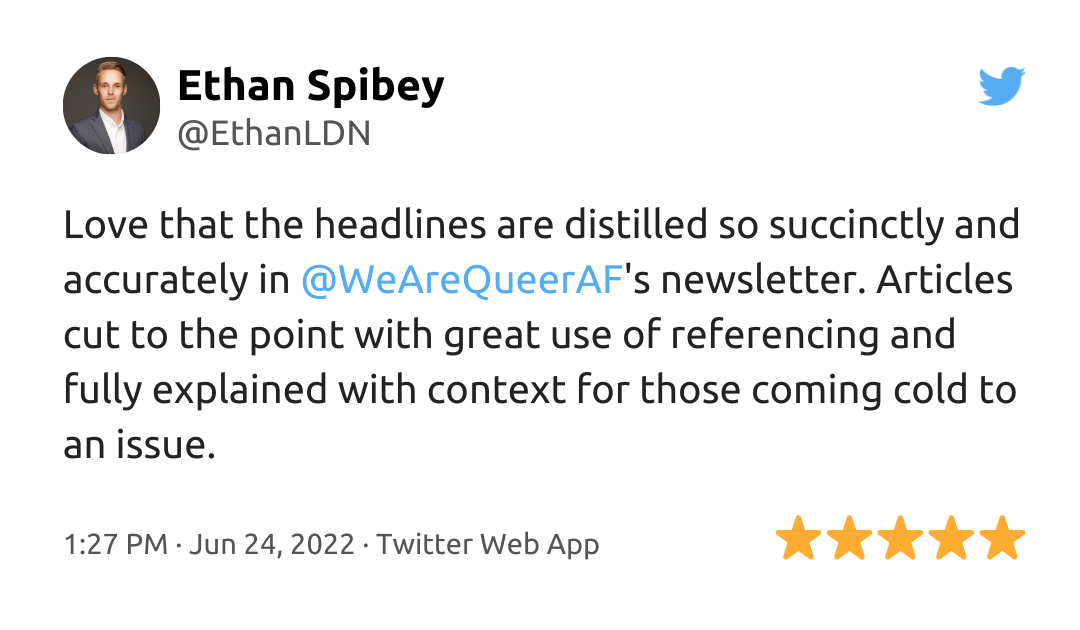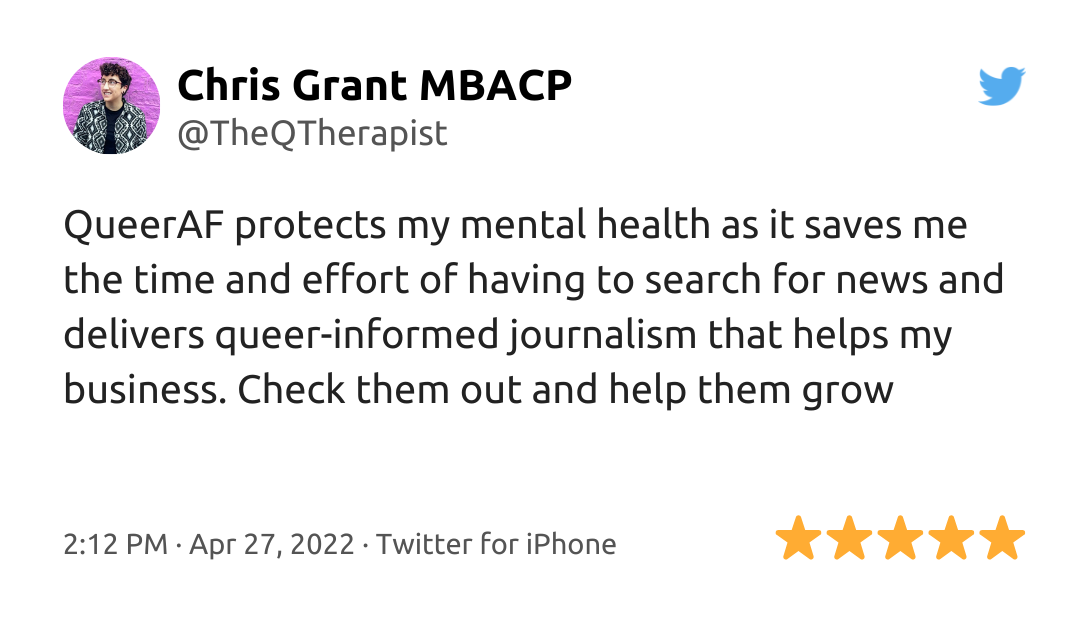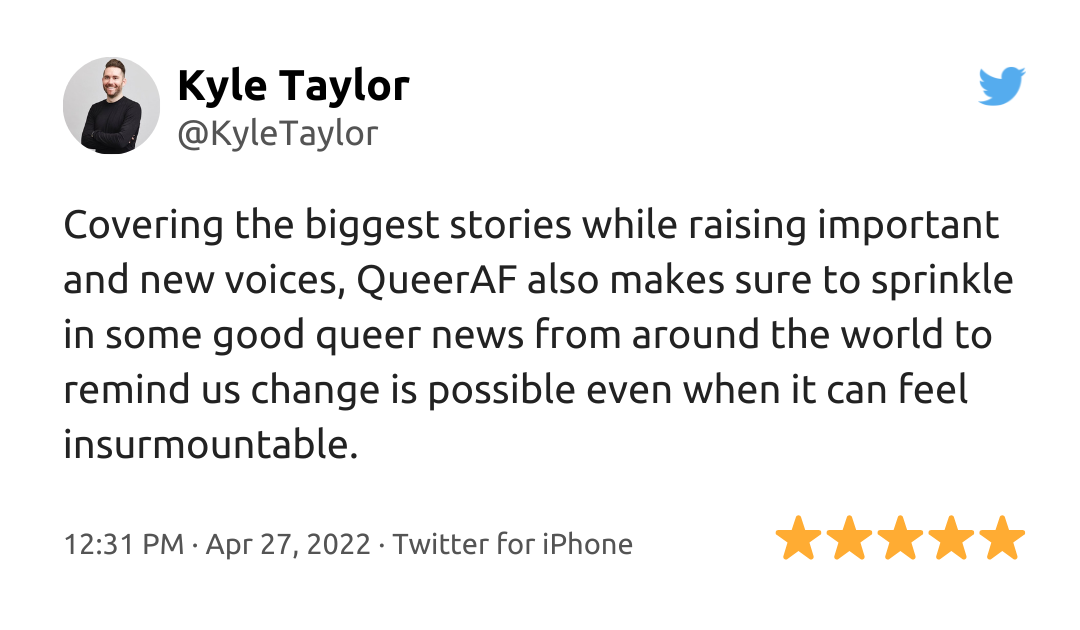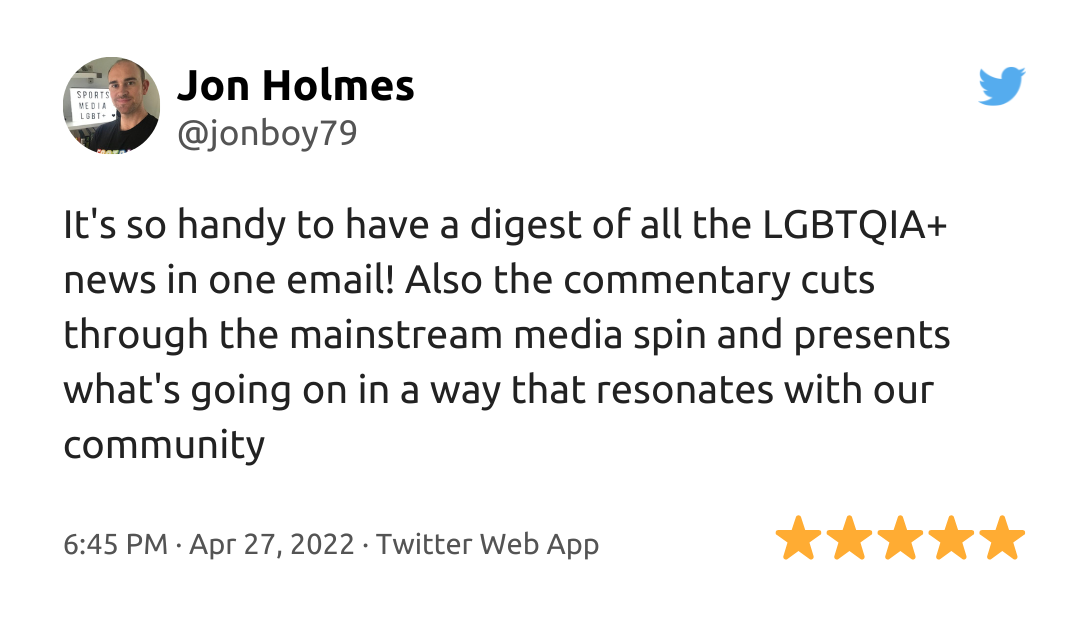Every year, we review our work as an independent, regulated LGBTQIA+ publisher. Now you can too:
Trust in mainstream media is at an all-time low. Short-term ad-driven revenue models are failing ,he LGBTQIA+ community.
The diversity of those who write our stories has barely changed. A fundamentally broken industry constantly misrepresents us.
That's why QueerAF is a platform where creators, journalists and producers can get paid and commissioned directly by the QueerAF community.
When QueerAF members sign up they get a direct say on the kinds of content and writers we should focus our funds on.
The graphs you see on this page reflects what our engaged community of queer entrepreneurs, community leaders and LGBTQIA+ community advocates asked for.
Usually, only editors get to see data like this. But for the same reason, we became the first and remain the only LGBTQIA+ publisher in the UK to be regulated - we're showing you the data.
It's here - so you can hold us accountable. Afterall, you are our most important editor.
But don't just take our word for it; scroll down to see how we've done.
We're launching this data as part of our annual LGBT+ History Month fundraiser - this year we're raising funds for our first ever launchpad initiative, Trans+ History Week. Although memberships are always the best way to support us – if you think our approach to creating media with queer folk from marginalised backgrounds rocks, please:
Donate to support QueerAF journalism
Sexual and romantic orientations
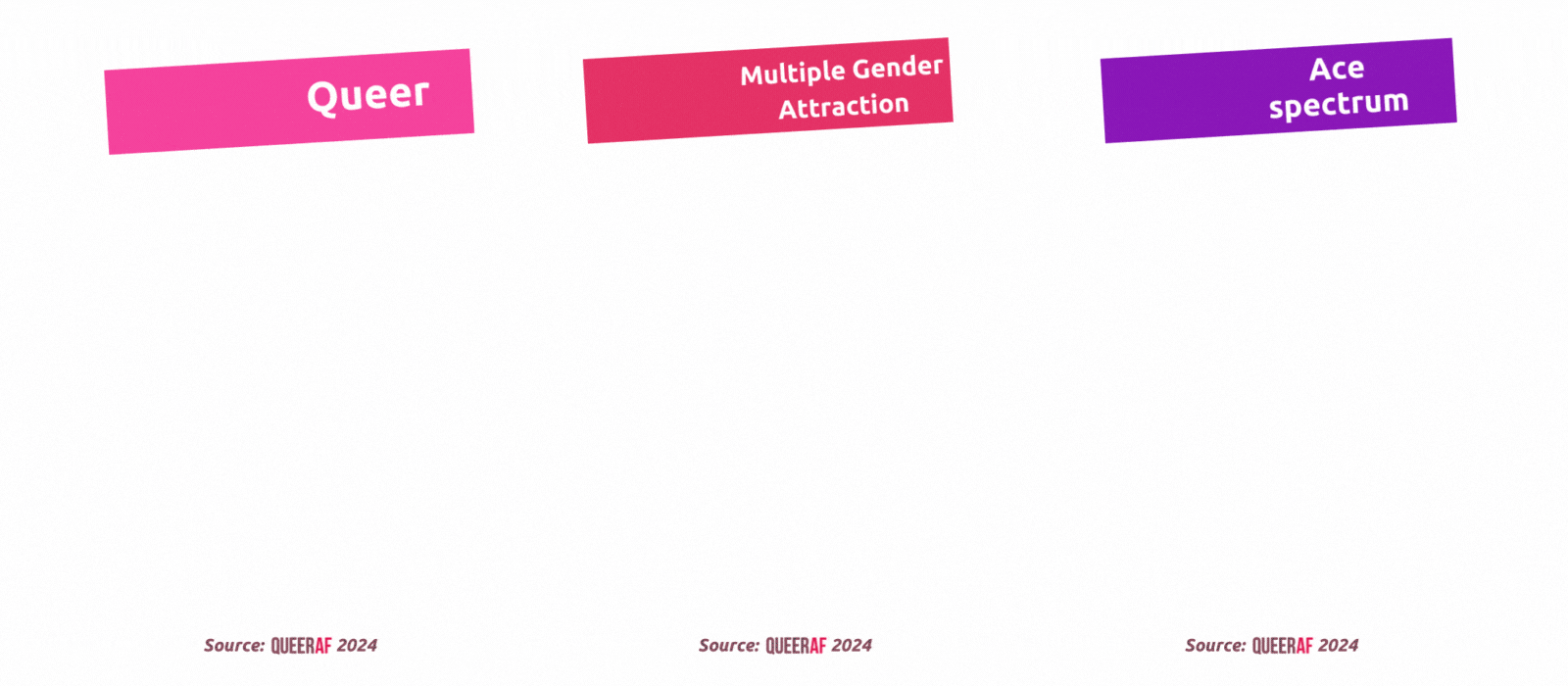
Two in ten of our writers identified as attracted to multiple genders.
One in ten (13%) said they fell within the asexual spectrum, which includes demisexual and demi-romantic orientations too. This community is vastly underrepresented within the media.
7% of our writers identified with the word lesbian, while other women writers used the term queer women.

By label and by nature:
60% are QueerAF
Gender identity
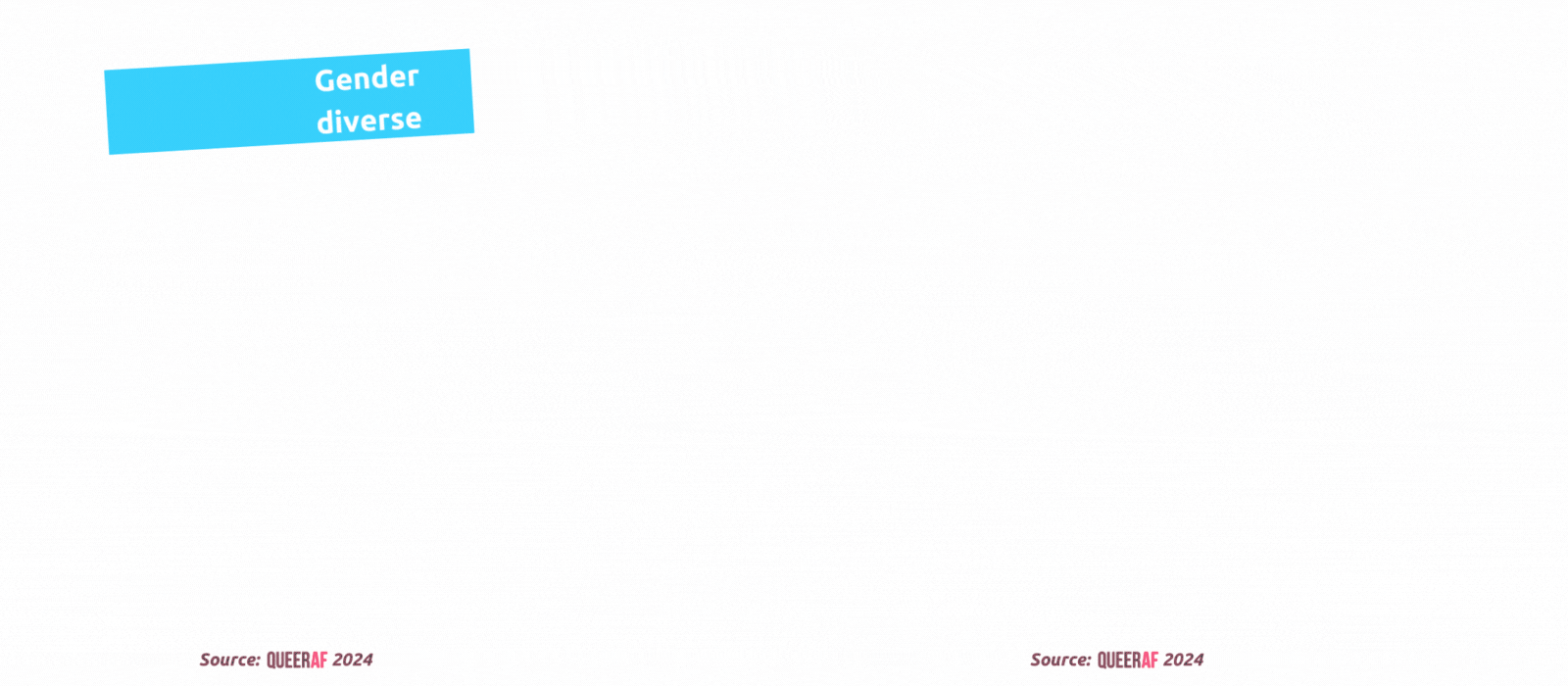
A large majority of our contributors are gender diverse, in fact - six in ten (60%) were.
Many use or identify with multiple gender identities or labels, especially those who are non-binary. This reflects the fluidity of gender.

What she/he/they said:
Our writers pronouns
53% of our contributors in the last year identify as transgender, 33% as non-binary and 3% as genderqueer.
Of our cisgender writers, 23% were women, and 10% were men.
Marginalised backgrounds
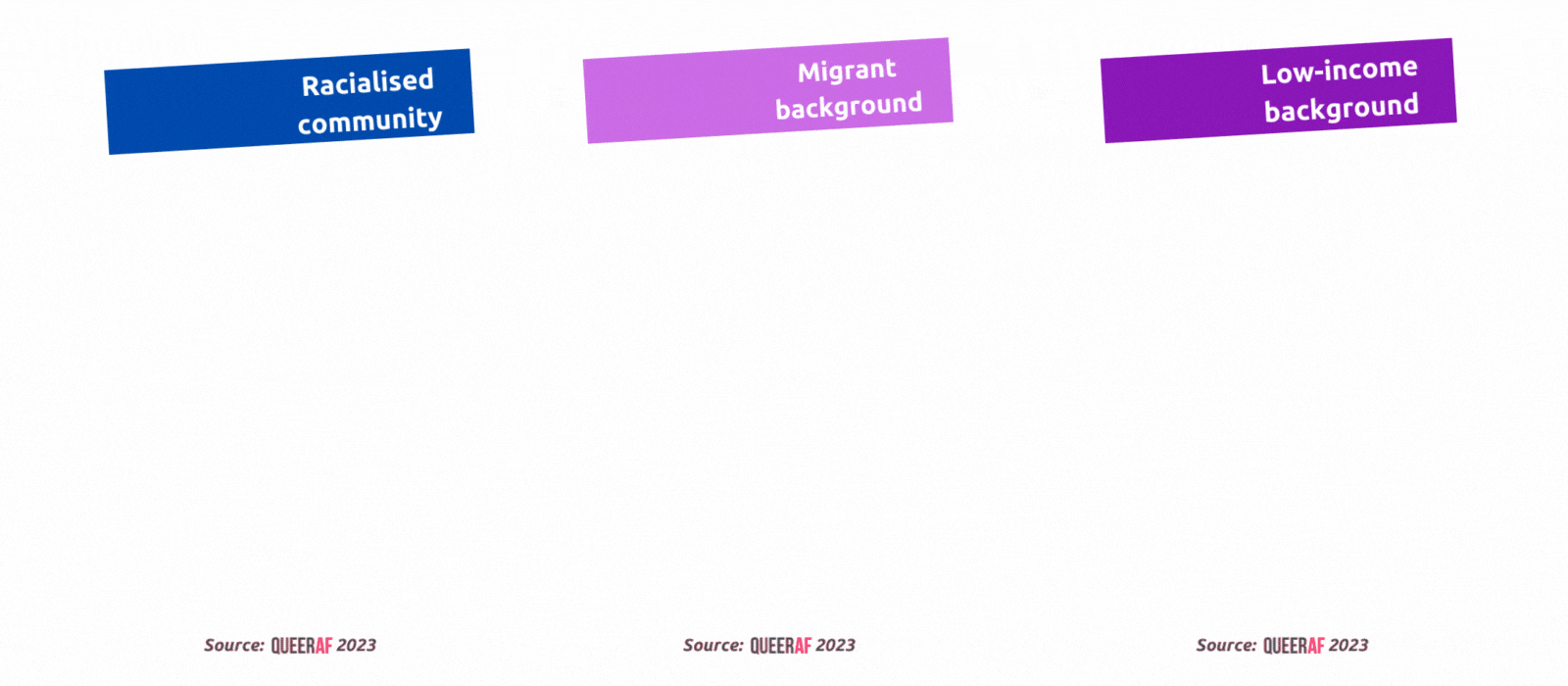
The media needs to build trust in all areas of the LGBTQIA+ community. But racialised communities have been hit hardest by the worst traits of the UK press. 10% are from Asian backgrounds, and 10% Black.
As a small, but new independent publisher, we recognise we have work to do to build and earn that trust. We're proud that 20% of our writers come from a racialised community; the UK press averages at 14%. But as we strive to set the model for the rest of the media, we want to see those numbers grow.
NCTJ Diversity in Journalism's annual report continues to find that working-class people were heavily unrepresented in the news industry. It's because journalism relies heavily on graduates and university routes. Our schemes, which welcome novice writers with no exerpertise aim to help others who don't use these routes.
13% of our contributors come from a low-income background, while 7% are from a migrant background.
Disabilities
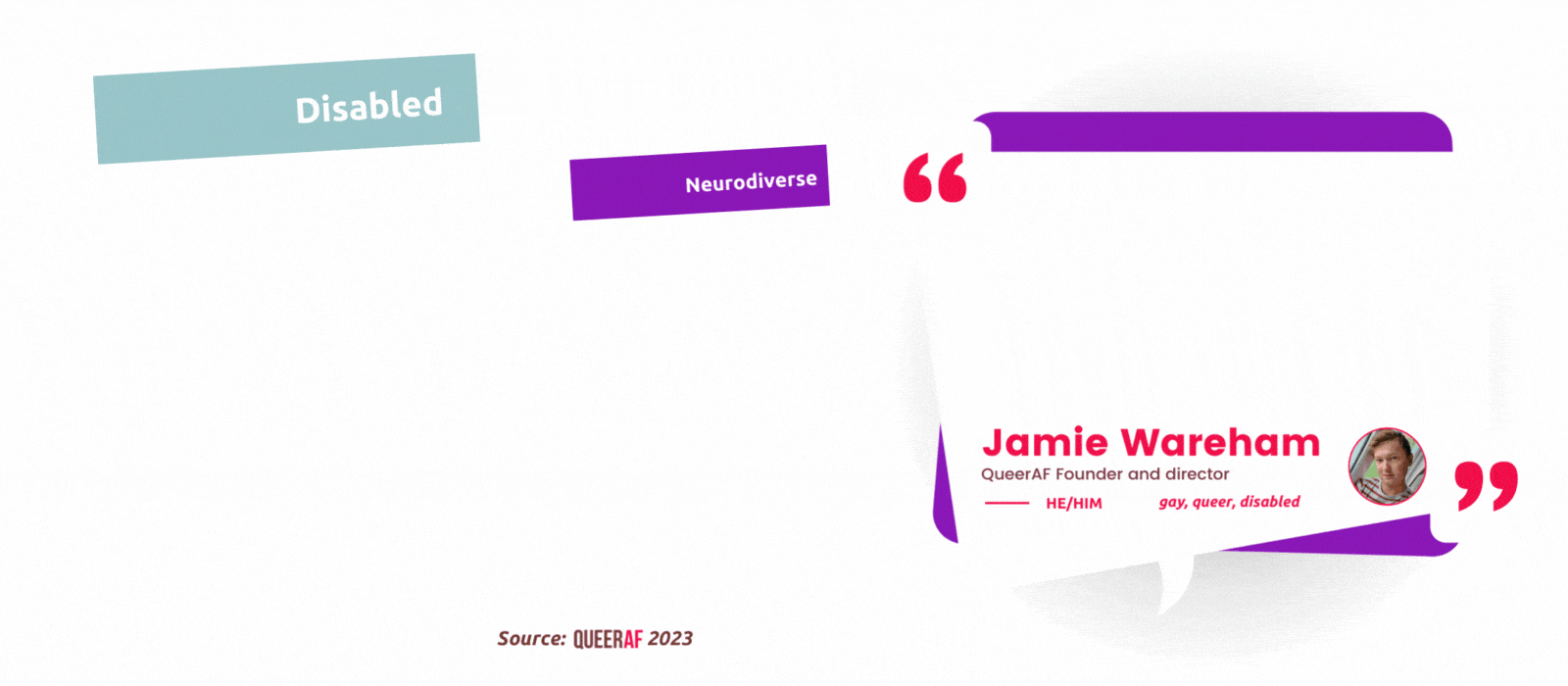
NCTJ's Diversity in Journalism 2023 report found that in UK newsrooms, 22% of journalists have a disability. At QueerAF we match that number. Two in ten (23%) of our contributors are disabled or have a chronic illness or neurodiversity.
Folks with neurodiversity are often locked out of opportunities because workplaces don't understand their needs. It's why we've worked hard to design our schemes and communication approach, so they work for contributors - not just us.
What about the cash?
How we spend your money
We're funded by people, not advertisers. It's so we can make content that counts - for the community, not clicks.
Our members set the agenda and tell us what to create. We've created an 'open newsroom' culture to tell the best version of the story, not simply the fastest.
So it's only right we tell you how we spent your money too.

You fund QueerAF:
Our funds go to queer creatives
Our next biggest costs were IT software and subscriptions like the non-profit Ghost, which we host and run our newsletter with, plus Zapier, Typeform, MailerLite and other tools you use to interact with us.
After this was tax and accountancy fees, like other digital businesses, we also lose around 2% of our income to payment fees.

You are our most important editor
The unique approach we've set out in this year in review shows just how important it is that you're in charge of what we make.
We've delivered these commissions based on what matters to you - our members and readers, not advertisers or other outside pressures.
We do all this alongside supporting queer creatives with their career, portfolio and a joint mission to change the media.
Although memberships are always the best way to support us – if you think we've done a good job delivering commissions to a diverse range of LGBTQIA+ contributors matters - please, support our crowdfunder so we can generate funds to capture, celebrate and commerorate Trans+ History May 06 - 12 2014.



